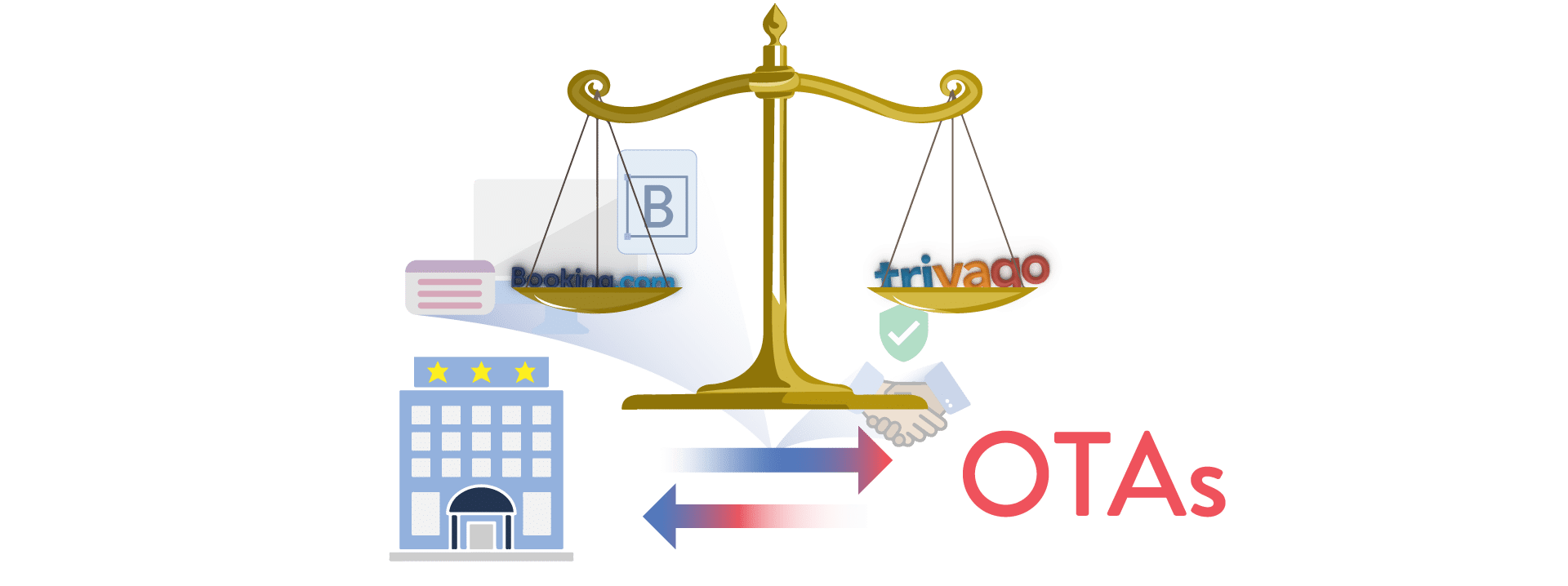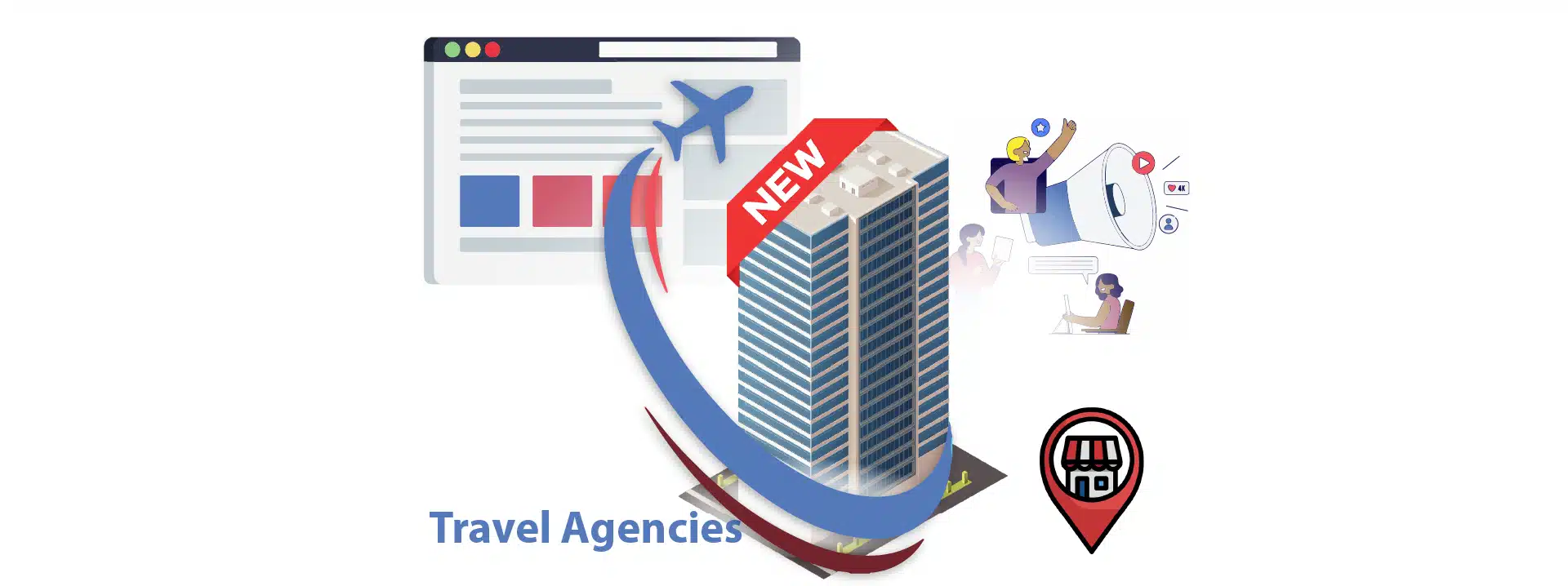
What Is The Importance Of Rate Parity For A Hotel?
Maintaining a consistent rate for your hotel rooms across all platforms is known as rate parity. So, when a customer looks at the price for a particular guestroom on your website, an OTA (Online Travel Agency), or a metasearch booking agent, they should see the same rate mentioned.
In contrast, room rate disparity is when you notice different prices for the same accommodation on various channels. This may arise if a hotel is giving special discounts or an OTA, not under contract, sells the room at a lower cost.
Before we understand the importance of price parity, let us first explain the relationship between a hotel and an Online Travel Agency.
The Hotel – OTA Relationship
Since listings on OTAs and metasearch booking platforms are a necessity nowadays, hotels are often at the mercy of these organizations when pricing their rooms.
As it is, different OTAs charge different commissions, anywhere from 15% to 30%, affecting your overall profits. An OTA can further increase this commission as it gains market leadership.
Moreover, OTAs have stringent contracts that restrict you or any other OTA from selling your rooms at a lower price. As a result, you cannot have special discounts that may increase direct bookings.
Luckily, a hotel marketing agency can assist you in increasing direct bookings via diverse methods. They can manage your hotel website and optimize it to rank higher on search engines.
Additionally, through social media management, you can offer limited-time Facebook or Instagram-only discounts that encourage customers to book directly with you. Similarly, email marketing is another alternative through which you can contact guests without advertising deals openly online.
Moreover, complimentary services like WiFi, spa massage, breakfast, and extra loyalty points help make direct bookings more rewarding for guests. Also, keeping a category of rooms exclusive to the hotel website is an excellent way to attract customers.
Why is Rate Parity Important?
Even though it comes with a few restrictions, the importance of rate parity is paramount.
Trust
For a customer, having to check several different platforms and then compare prices can be frustrating and time-consuming. With hotel price parity, trust comes naturally. Customers know they will get the best possible rate no matter where they book a room.
Branding
Trust and hotel branding are co-related. As your clients begin to trust you, the hotel’s brand value automatically increases. Eventually, the aim is to have a leadership position in the market where customers come directly to you and know that your website will not charge more than anywhere else.
First Impression
The famous saying “first impression is the last impression” is very much true for hotel rate parity. Suppose a guest visits your website and notices they can get the same room from an OTA at a cheaper price. Not only will you miss a direct booking, but that customer will probably never revisit your website.
On the other hand, if your hotel website offers a considerable discount, then the guest will expect a lower price every time they book in the future. And if you cannot give that special rate, the guest might be displeased.
Issues with Rate Parity
Now that we know about the importance of rate parity, let us investigate some of the issues one might face when implementing it.
Several hotels nowadays use dynamic pricing. This includes constantly changing room rates based on a number of factors such as demand, availability, season, and more. If these frequent price changes are not updated on OTAs simultaneously, it can result in contract violation.
Often new or smaller OTAs might take a hit on their commission and offload their inventory by reducing prices. Not only does this lead to an abuse of rate parity, but it also takes away direct booking opportunities from you.
Lastly, hotel rate party issues may arise due to calculation mistakes. For instance, if someone takes the incorrect value of a tax or surcharge, it will come up as a price mismatch on the OTA, resulting in disparity.
As you’ll notice above, rate disparity may happen by chance or on purpose. Either way, taking action to rectify the problem is essential once you are aware of it.
How to Successfully Monitor Rate Parity?
As is the case with any business practice, implementing hotel rate parity has both advantages and disadvantages.
On the one hand, many European countries have taken a strong stand against OTAs wanting to include price parity in their hotel contracts. Italy, France, Austria, Germany, Sweden, and the UK have strict regulations regarding rate parity, allowing hotels to alter room rates without facing a penalty from OTAs.
At the same time, the concept of rate parity is still prevalent across most of the world. As such, it becomes essential for hotels to monitor rates continuously across platforms.
Steps to remove any form of disparity
- Work with a select few OTAs you can trust.
- Use a rate checker app to monitor your hotel room prices across various OTAs. You can also set alerts that notify you as soon as someone lists a room below a specific price.
- Randomly but regularly check OTAs and metasearch booking agents to confirm they adhere to price parity agreements.
By following the above, you can swiftly eliminate any occurrence of disparity, whether on your own site or that of an OTA.
Keeping a watch on rates will require having a designated manager to take action when necessary. Alternatively, you can assign the task to your hotel marketing agency, which in all probability, has a larger team and handles such matters frequently.
ADIGITAL is a leading hotel marketing agency that can help strategize your hotel’s pricing, work towards increasing direct profits and reduce dependency on OTAs. Contact us if you wish to take your hotel brand to the next level and beyond!


